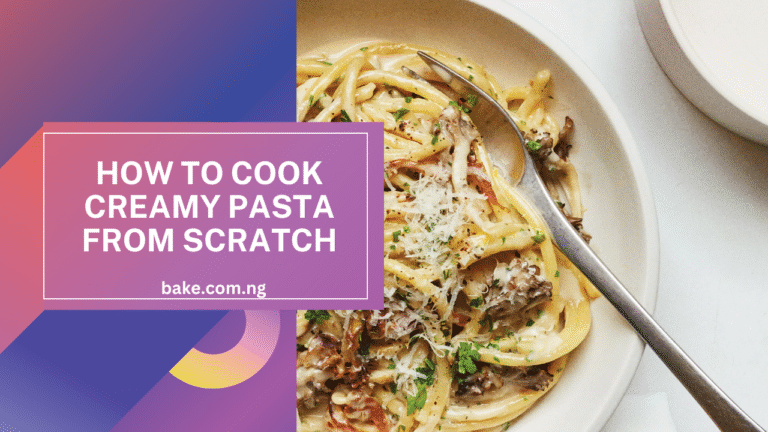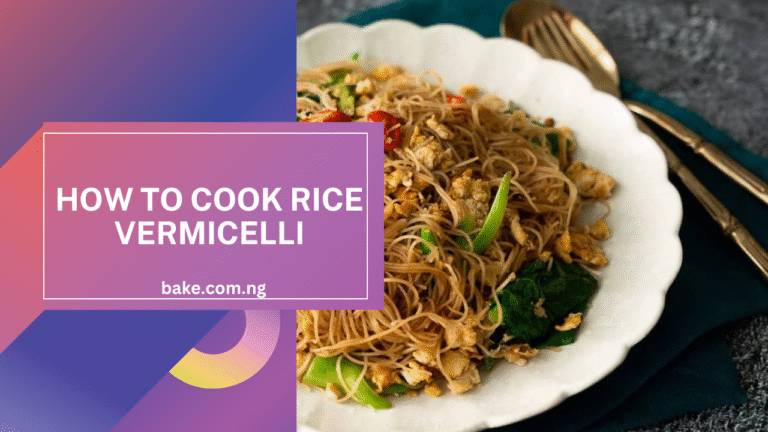Coconut rice is a delicious and aromatic dish that brings together the creamy richness of coconut with the simplicity of rice. This dish, popular across various tropical regions, has a unique flavor profile that makes it perfect as a standalone meal or as an accompaniment to curries, stews, grilled meats, or vegetables. If you’re looking for a way to elevate your usual rice dish, coconut rice is definitely worth trying! In this blog post, I’ll walk you through a comprehensive, step-by-step recipe for making coconut rice at home.
Why Coconut Rice?
The key ingredient—coconut milk—gives the rice a subtle sweetness and creamy texture, making each spoonful melt in your mouth. Coconut rice is versatile; it pairs well with spicy, sweet, or even tangy dishes. Whether you’re aiming for an exotic tropical feast or just craving a comforting bowl of rich rice, coconut rice can easily be the star of your meal.
Ingredients You’ll Need
For this recipe, we’ll need a handful of basic ingredients:
- Rice – 2 cups (Basmati or Jasmine rice is ideal, but any long-grain rice will work)
- Coconut Milk – 1 can (about 400 ml), or 1½ cups if you’re making fresh coconut milk
- Water – 1 to 1½ cups (this will depend on the rice-to-liquid ratio of your specific rice variety)
- Salt – ½ to 1 teaspoon, to taste
- Oil or Butter – 1 tablespoon (optional, for a richer flavor)
- Sugar – 1 teaspoon (optional, for a hint of sweetness)
Optional Add-Ins:
- Fresh Grated Coconut – 2 to 3 tablespoons for added texture and coconut flavor
- Ginger or Garlic – Finely chopped, to give the rice a slight aromatic boost
- Bay Leaf or Pandan Leaf – A bay leaf or pandan leaf adds a fragrant layer to the dish
- Spring Onions or Cilantro – For garnish
Step-by-Step Instructions
Step 1: Prepare the Rice
- Rinse the Rice: Rinse the rice thoroughly under cold water until the water runs clear. This helps to remove excess starch and prevent the rice from becoming sticky.
- Soak the Rice (Optional): For softer rice, soak it in water for about 15–20 minutes. This step is particularly useful if you’re using long-grain rice, as it allows for even cooking.
Step 2: Prepare the Coconut Milk
If you’re using canned coconut milk, give it a good shake or stir before measuring. Canned coconut milk can sometimes separate, with a thick layer of cream forming on top. This is normal and can be mixed back together by stirring. If you’re using homemade coconut milk, strain it through a sieve or cheesecloth to remove any solid bits for a smooth texture.
Step 3: Measure the Water and Coconut Milk
Coconut milk should make up about half the liquid content. So, if you have 2 cups of rice, you’ll need roughly 3 cups of liquid in total (coconut milk + water). Adjust based on your rice type and the package instructions, as some rice varieties may require slightly more or less water.
Step 4: Cook the Rice
- Heat the Pot: In a medium-sized pot, add a little oil or butter. This helps to prevent the rice from sticking and adds a hint of richness.
- Toast the Rice (Optional): Add the rice and toast it for 1-2 minutes over medium heat, stirring constantly. This step is optional but brings out a subtle, nutty flavor in the rice.
- Add Liquid and Seasoning: Pour in the coconut milk and water. Add the salt, sugar (if using), and any optional ingredients like ginger, garlic, or a bay leaf.
- Bring to a Boil: Increase the heat to high until the liquid comes to a rolling boil.
- Simmer and Cover: Once boiling, reduce the heat to low, cover the pot with a tight-fitting lid, and let it simmer. Let the rice cook undisturbed for about 15–20 minutes, depending on the rice type.
Step 5: Fluff and Serve
After the cooking time, remove the pot from the heat and let it sit, covered, for about 5 minutes. This resting time allows the rice to absorb any remaining liquid and ensures it is perfectly tender.
Using a fork, gently fluff the rice to separate the grains. If you’re adding fresh grated coconut or herbs like cilantro, this is the time to gently fold them in.
Serving Suggestions
Coconut rice can be served in many ways. Here are some delicious options:
- With Curries: Coconut rice pairs perfectly with spicy curries, especially those with a tomato or coconut base. Try it with Thai or Indian-style curries for an unforgettable meal.
- With Grilled Meats or Seafood: Coconut rice complements grilled shrimp, chicken, or fish wonderfully. The creaminess of the rice balances the smokiness of grilled food.
- As a Tropical Side Dish: Serve coconut rice alongside a fresh fruit salsa, like mango or pineapple, for a refreshing, tropical vibe.
- Topped with Nuts and Raisins: Garnish your coconut rice with toasted cashews, almonds, or raisins for added texture and a sweet-savory combination.
Tips and Tricks for Perfect Coconut Rice
- Choose Quality Coconut Milk: For the richest flavor, go for full-fat coconut milk. If you prefer a lighter version, you can use lite coconut milk, but the rice will be less creamy.
- Adjust the Water: Depending on your rice type, you might need to adjust the water-to-rice ratio. Basmati rice generally needs less water than jasmine rice.
- Don’t Over-Stir: Once the rice is simmering, avoid stirring, as this can make it sticky.
- Use a Rice Cooker for Convenience: If you have a rice cooker, you can simply combine the ingredients and let the cooker do the work. Coconut rice cooks beautifully in rice cookers.
- Add a Bit of Sugar: For a more Caribbean-style coconut rice, add a bit of sugar. This adds a subtle sweetness that makes it perfect for pairing with spicy dishes.
Health Benefits of Coconut Rice
Coconut milk, the core ingredient of coconut rice, is not only delicious but also packed with nutrients. It’s rich in healthy fats, particularly medium-chain triglycerides (MCTs), which have been shown to support weight management and provide quick energy. Additionally, coconut contains lauric acid, known for its antiviral and antibacterial properties. The rice itself is a great source of energy, making coconut rice a nutrient-rich and satisfying meal choice.
Variations on Coconut Rice
There are many ways to customize this recipe! Here are a few ideas:
- Spicy Coconut Rice: Add a pinch of chili flakes or a dash of hot sauce to give it a kick.
- Coconut-Lime Rice: Add the zest and juice of half a lime for a refreshing twist. The lime adds acidity that complements the creamy coconut.
- Herbed Coconut Rice: Incorporate herbs like cilantro, basil, or even lemongrass for a fragrant dish.
- Sweet Coconut Rice: To make this as a dessert, add more sugar, and garnish with dried fruits and nuts.
Wrapping It Up
Coconut rice is a dish that’s not only simple to make but also incredibly satisfying. The creamy coconut milk infused with fragrant rice is bound to win over anyone who tries it. By following the steps above, you’ll be able to enjoy this delightful dish that transports you to a tropical paradise with every bite. Whether served alongside spicy dishes or enjoyed on its own, coconut rice is sure to become a favorite at your table.
Happy cooking!




